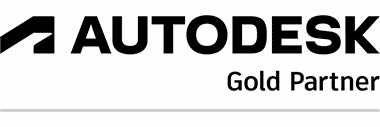Earlier pandemics had a huge effect on how cities were designed. The COVID-19 pandemic promises to do the same for offices.
As the pandemic surges on, businesses must reconsider their office building designs, looking for ways to improve traffic flow and upgrade their ventilation and airflow systems. Implementing necessary changes may be an issue for some businesses, but it’s a crucial task just the same. As Elvis Garcia, DrPH, a lecturer at the Harvard Graduate School of Design says: “Let’s not fool ourselves. This is not the last virus we’ll face.” Watch the video to learn more about how COVID-19 may reshape office spaces.
Sam Omans, Architecture Industry Strategy Manager, Autodesk: Pandemics have had an enormous impact historically on architecture. If you’ve been to Manhattan, it’s got these straight gridiron streets. Those emerged during the 1800s as a response to health concerns associated with sewage, associated with light, associated with air. By building straight streets, you can build sewers right under the street. Earlier pandemics, flus, and contagions were understood to be associated with things like water and waste. So moving those out of the city and bringing light and air into the city became, from the 19th century forward, an enormous consideration in city planning.
Elvis Garcia, DrPH, Lecturer, Harvard Graduate School of Design: The office, by default, is not a safe environment. We are talking about an enclosed space with air circulation, with people inside, so we have to learn how to live with that because—let’s not fool ourselves—this is a virus, but it’s not the last virus we’ll face.
Lilli Smith, AIA, Senior Product Manager, Autodesk: There are certain points of interest in an office: coffee, bathrooms, exits, places where people’s paths lead. It’s important to analyze how those paths cross, where there could be congestion.
Pete Thompson, Senior Principal Engineer, Autodesk and Adjunct Lecturer, Lund University: What’s changed in the current pandemic conditions is that one-way flow is now really required in many aspects, just to try and keep people that radius of 6 feet, or 2 meters, or a meter further apart in all directions. So different aspects of technology can help in implementing those new routes and planning.
Garcia: One of the biggest challenges for people is organizing the traffic flow within the offices.
Smith: There’s a lot of thinking in offices around spacing for social distancing.
Thompson: When you’re planning office space, the default position of people is just to mark a grid on the floor and start from there. That doesn’t accommodate the fact that if you lay it out as 6 feet apart for each point, it doesn’t include the body size of people. And it also doesn’t allow people to walk in between each other, either.
For a regular doorway, you get about 130 people a minute through in “normal times.” For social distancing, that’ll drop to 25, 30 people a minute, but it’s a 75% drop in flow rates. And people need to be aware that when they’re planning on people going in or coming out of their building, it’s going to take a lot longer.
Garcia: Another important parameter is ventilation and airflow. It would be easier, yes, to just to open the windows and that’s it, because it will reduce the amount of viral load in the air. It’s not that straightforward. This has to come together with some more complex systems like air purification with specific filtering systems in place. It’s true that many offices don’t have the possibility to open windows. I think it’s an issue—it’s a problem for offices—the fact that they need to really upgrade their ventilation systems and their airflow systems.
Thompson: It’s a little easier than it would have been 15 years ago to plan for some of these requirements in 3D space for buildings. We’ve got digital tools available to us, so the designer can use things like Building Information Modeling packages like [Autodesk] Revit, where you can design the 3D space and lay out all those pathways.
Smith: Just as the pandemic was in full force, we released our generative-design tools. They allow you to encapsulate your design ideas and a system for how your design is going to work. So in the case of a restaurant, you’re looking at the spacing of the tables and making sure that it’s safe for restaurant patrons. But you’re also looking at the number of tables that you have, and is that going to be enough tables to make my restaurant still economically viable?
The consideration of spacing was always important, and that’s why it was part of our pre-pandemic plan for these tools. Being able to easily adjust that spacing is something that we can do. So it turned out to really be a good system that we could use for a purpose that we never envisioned.
Garcia: Technology can help us to adapt whenever new discoveries are made. And if we discover that this virus is spread in a different way, then we can adapt technology very easily to produce solutions that we can use. Otherwise, we will have to start from scratch. So I think technology can help a lot when trying to adapt very fast to new scenarios that come with new knowledge of the virus.
Omans: Throughout history, we’ve moved from closed offices to cubicles to totally open-plan offices, with as many people in them as possible. And what we’ve seen, if you look at the history, is that worker satisfaction has gone down actually. So this is an opportunity to bring worker satisfaction up and to reinvent the culture of the space.
Garcia: I believe this is a tipping point, and I believe that people are realizing that the way we inhabit spaces has a direct impact on health. It has to be far beyond a single virus. It’s more about how we live and how this technology can help us to understand the way we are building and how we can decrease the impact of the built environment on our health.



